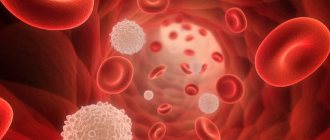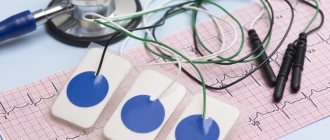Pediatrician
Sayfulina
Maryam Zakareevna
31 years of experience
Pediatrician of the highest category, member of the Union of Pediatricians of Russia
Make an appointment
Hemophilia is a hereditary pathology of homeostasis, manifested in a violation of blood clotting against the background of reduced synthesis of necessary substances by the patient’s body (factors VII, IX, XI). Persons suffering from the disease regularly find hematomas on their bodies or encounter hemarthrosis, internal bleeding due to injuries or surgical interventions. Treatment of hemophilia in children is based on replacement therapy, which must be received throughout life.
Reasons for the development of pathology
The mechanism and type of inheritance of hemophilia have been studied in sufficient detail. Genes that provoke insufficient production of blood clotting factors are linked to the X chromosome. The pathology is inherited recessively through the female line. Hereditary pathology occurs exclusively in boys.
The sons of a healthy man and a woman who is a carrier of the pathological gene are equally likely to be born without signs of hemophilia or with them. A man suffering from bleeding disorders will be able to conceive healthy children with a woman who is not a carrier of the altered gene.
Medicine knows of isolated cases of hemophilia in women. Their mothers were carriers of a mutated gene, and their fathers suffered from insufficient production of blood clotting factors. The cause of hemophilia in such cases is a combination of recessive and dominant genes.
List of sources
- Protocol for the management of patients with Hemophilia. Problems of standardization in healthcare 2006, p. 18-74.
- Guide to hematology: in 3 volumes. T.3 / Edited by A.I. Vorobyov. 3rd ed. M., 2005.
- Rumyantsev A.G., Rumyantsev S.A., Chernov V.M. Hemophilia in the practice of doctors of various specialties. 2013. 136 p.
- Tretyakova O.S. Hemophilia in children: etiopathogenesis, clinical manifestations, diagnostic approaches //Children's medicine. 2012, 3-4 (16-17) p. 26-35.
- Zozulya N.I., Kumskova M.A., Polyanskaya T.Yu., Svirin P.V. // Clinical guidelines for the diagnosis and treatment of hemophilia. 2021. 34 p.
Classification of the disease
Types of hemophilia are distinguished based on the deficiency of a certain blood clotting factor in the patient's body. Basic information about the types of disease is presented in the table.
| View | Description |
| A | It is diagnosed in 84-86% of people suffering from the pathology in question. Caused by a deficiency of clotting factor VIII (antihemophilic globulin). |
| B | Occupies a share of 12-13% of clinically diagnosed cases of hemophilia. Develops against the background of deficiency of coagulation factor IX (thromboplastin) |
| C | Occurs no more often than 1-2%. Becomes a consequence of insufficient production of blood coagulation factor XI. |
About 0.5% of detected cases of hemophilia of various etiologies belong to other types - V, VII, X and others.
Pathogenesis
The pathogenesis of hemophilia is based on a deficiency of plasma factors (VIII, IX, XI) of blood coagulation, which causes a disruption of the process of blood coagulation in the internal coagulation unit of hemostasis (formation of thromboplastin) and causes hematoma delayed type of bleeding. The first stage of blood coagulation is the process of thromboplastin formation, which occurs normally only if there is a sufficient concentration of factors VIII and IX. Its duration is 12-15 minutes, and the subsequent process of blood clotting after the appearance of active thromboplastin in the blood occurs almost instantly.
It is the disruption of this plasma phase of hemostasis that causes the type of bleeding characteristic of hemophilia. Bleeding immediately after injury may be absent, since primary (vascular-platelet) hemostasis functions normally, which ensures the formation of a primary thrombus.
Since the primary thrombus is not able to provide a final stop of bleeding, secondary hemostasis suffers - the formation of a fibrin (final) thrombus, the bleeding resumes and occurs suddenly a few hours (the next day) after surgery/trauma. At the same time, despite its duration, there is no increase in the volume of blood loss, which is its feature. The figure below schematically shows the pathogenesis of hemophilia.
Symptoms of hemophilia
The first signs of pathology can be detected in newborns. Thus, the likelihood of confirming the diagnosis of hemophilia in a child will be indicated by prolonged bleeding from the umbilical cord and numerous subcutaneous hematomas. Excessive bleeding in infants at the time of teething becomes no less alarming. But during lactation, the child receives a sufficient amount of thrombokinase with mother's milk.
Post-traumatic bleeding is typical for children who have learned to crawl and walk. In addition to nosebleeds, intermuscular hematomas and hemorrhages in the joints (hemarthrosis) are added. Against this background, anemia develops.
As children age, they may experience bleeding from the gastrointestinal tract. This is caused by injury or medical procedures. The greatest danger is bleeding from the nasopharynx and pharynx. Against this background, airway obstruction may develop.
Are you experiencing symptoms of hemophilia?
Only a doctor can accurately diagnose the disease. Don't delay your consultation - call
Diagnosis of pathology
Diagnostic procedures are performed by doctors of several specializations: neonatologist, pediatrician, geneticist and hematologist. For concomitant pathologies, consultation with a gastroenterologist, orthopedist, otolaryngologist and neurologist may be required.
At-risk couples should visit a doctor before conceiving a child. Molecular genetic research of biomaterials from future parents will allow us to take into account the risk of having a child with hemophilia. After conception, prenatal screenings may be performed. Their results will confirm or refute the fact that the child inherited hemophilia.
Neonatal tests performed in the first days of a baby’s life are no less effective. A coagulogram provides the neonatologist with comprehensive information about the production of coagulation factors by the newborn’s body.
In case of hemarthrosis, the child is prescribed an X-ray examination of the joints. Ultrasound diagnostics is performed when signs of internal bleeding and retroperitoneal hematomas are detected.
Diagnostic signs
Specialists of various profiles should take part in the diagnosis of the disease: neonatologists in the maternity ward, pediatricians, therapists, hematologists, geneticists. If unclear symptoms or complications appear, consultations with a gastroenterologist, neurologist, orthopedist, surgeon, ENT doctor and other specialists are sought.
Signs identified in a newborn must be confirmed by laboratory methods for studying coagulation.
Changed coagulogram parameters are determined:
- coagulation and recalcification time;
- thrombin time;
- activated partial thromboplastin time (aPTT);
- Specific tests are performed for thrombin potential and prothrombin time.
Diagnostics includes studying:
- thromboelastograms;
- carrying out genetic analysis for the level of D-dimer.
A decrease in the level of indicators to half the norm or more has diagnostic significance.
Hemarthrosis must be examined using radiography. Hematomas with suspected retroperitoneal localization or inside parenchymal organs require ultrasound examination. To identify kidney diseases and damage, a urine test and ultrasound are done.
Treatment of the disease
Therapeutic measures during the treatment of hemophilia belong to one of two groups - preventive or symptomatic. In the first case, a patient with a severe form of pathology receives regular doses of blood clotting factor concentrates. Their presence reduces the risk of developing arthropathy and internal bleeding. When planning surgical interventions (including tooth extraction), the patient receives repeated drug transfusions.
Symptomatic procedures are performed for cuts and external bleeding. Doctors recommend using a hemostatic sponge and applying a pressure bandage. Small wounds should be treated with thrombin.
Prevention
The causes of hemophilia are such that they cannot be avoided by any measures. Therefore, preventive measures consist of a woman visiting a medical genetic center during pregnancy to determine the hemophilia gene on the X chromosome.
If the diagnosis has already been made, then you need to find out what kind of disease it is in order to know how to behave:
- It is imperative to register with a dispensary, adhere to a healthy lifestyle, and avoid physical activity and injuries.
- Swimming and physical therapy can have a positive effect on the body.
People are registered at the dispensary as early as childhood. A child with this diagnosis is exempt from vaccinations and physical education due to the risk of injury. But physical activity should not be absent from the patient’s life. They are necessary for the normal functioning of the body. There are no special nutritional requirements for a child suffering from hemophilia.
For colds, Aspirin should not be given, as it thins the blood and can cause bleeding. You should also not use cups, as they can cause bleeding in the lungs. You can use a decoction of oregano and lagochilus. Relatives of the patient should also know what hemophilia is and undergo training in providing medical care if bleeding occurs. Some patients are prescribed clotting factor concentrate injections every three months.
Forecast
Replacement therapy allows the patient's body to produce a sufficient amount of antibodies that block procoagulant activity. Additional measures to support boys or men include plasmapheresis and the use of immunosuppressants. Against the background of regular blood and plasma transfusions, patients may encounter HIV, hepatitis, herpes or cytomegalovirus.
Mild hemophilia does not have a significant impact on the quality and life expectancy of patients. In severe forms of the pathology, the survival prognosis is significantly worse. Clinical guidelines for hemophilia include regular consultation of patients with a hematologist and monitoring of blood clotting parameters through laboratory tests.
Questions and answers
Is it possible to be completely cured of hemophilia?
Drug therapy and blood or plasma transfusion procedures relieve acute pathology syndromes. Sometimes patients are prescribed long-term use of medications selected based on medical history. But completely eliminating the symptoms of hemophilia remains impossible.
Does hemophilia pose a threat to a child's life?
If parents seek medical advice in a timely manner, the baby will be out of danger. A quick correct diagnosis and initiation of treatment will allow the child not to limit himself in physical activity and games.
Can a boy with hemophilia pass it on to his sons?
The risk of having children with hemophilia from a father with bleeding problems is minimal. The disease will be inherited by sons only if their mother is one of the carriers of the altered gene.
Hematuria
Hematuria is the discharge of blood in the urine, a serious symptom indicating impaired renal function or damage to the ureter, bladder and urethra (urethra). If there is a tendency to stone formation, then it is necessary to regularly see a urologist in order to prevent the formation of stones and trauma to the mucous membranes.
Hematuria is more often observed in children over 5 years of age. A provoking factor may also be trauma to the lumbar region; bruises that would not cause harm to a healthy child can become fatal.









